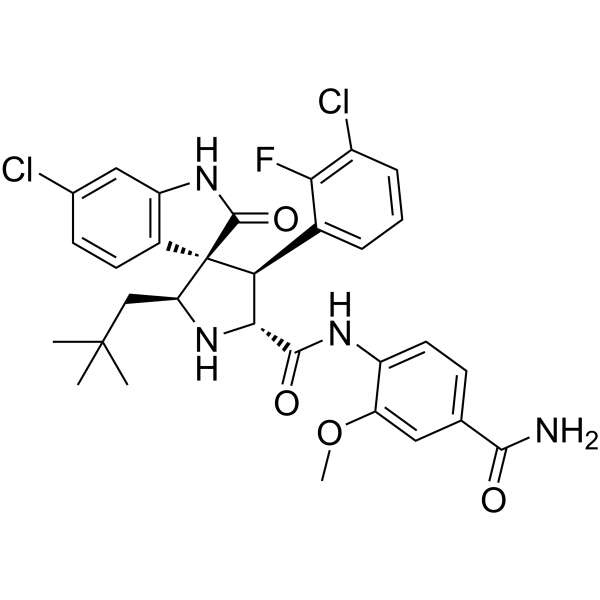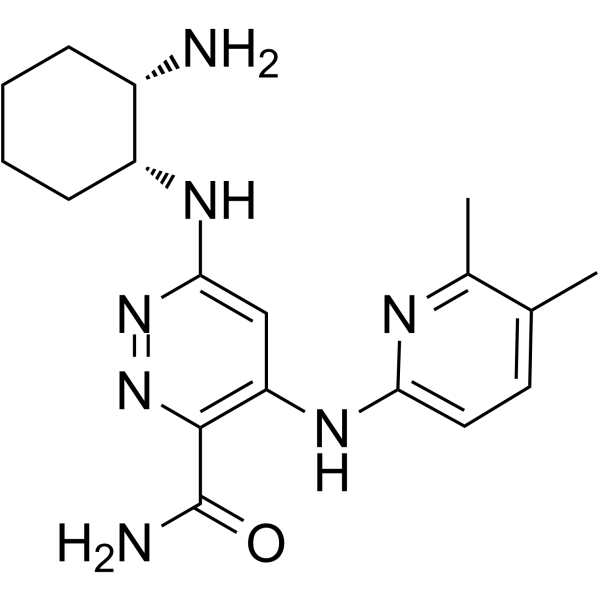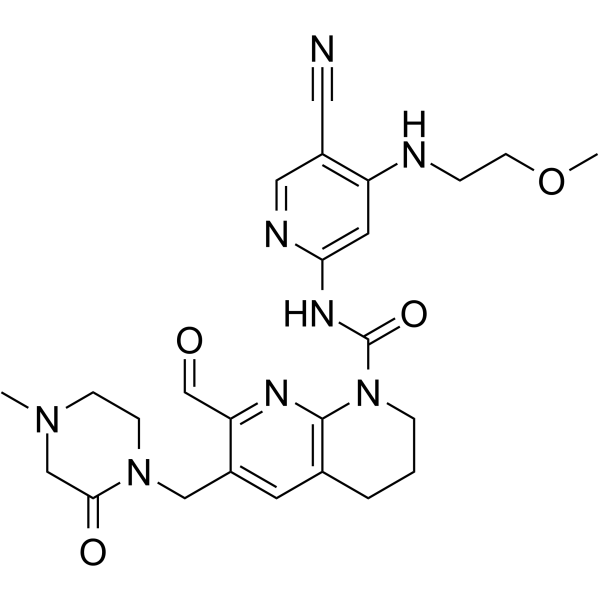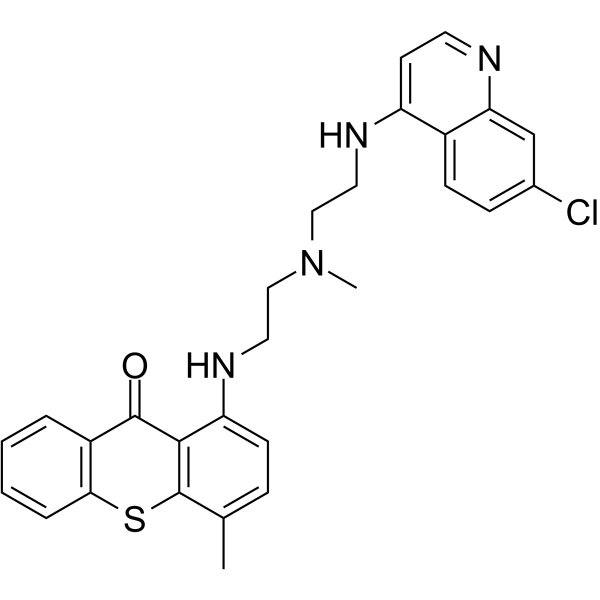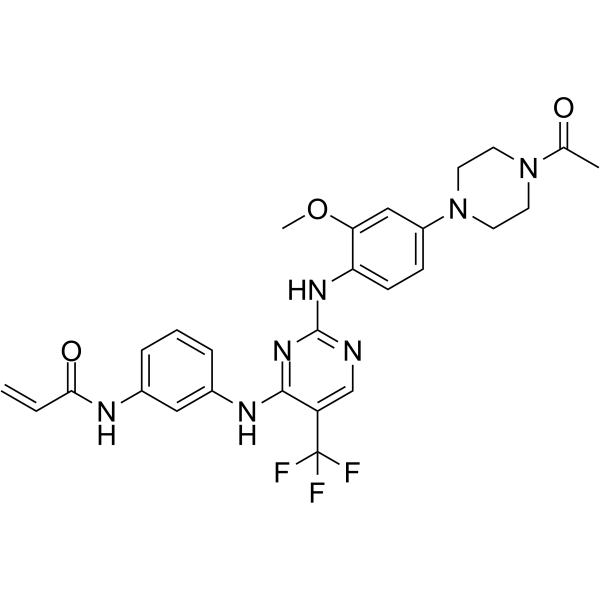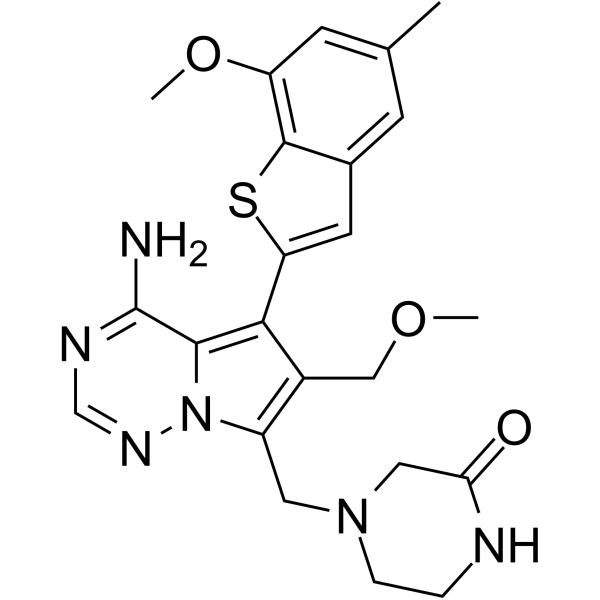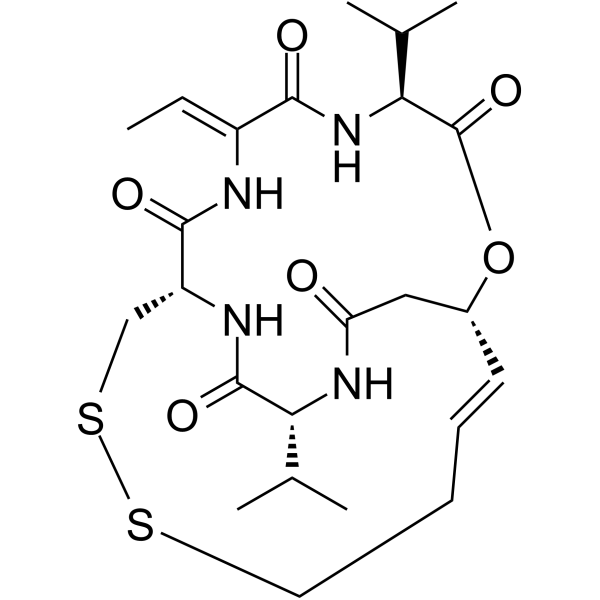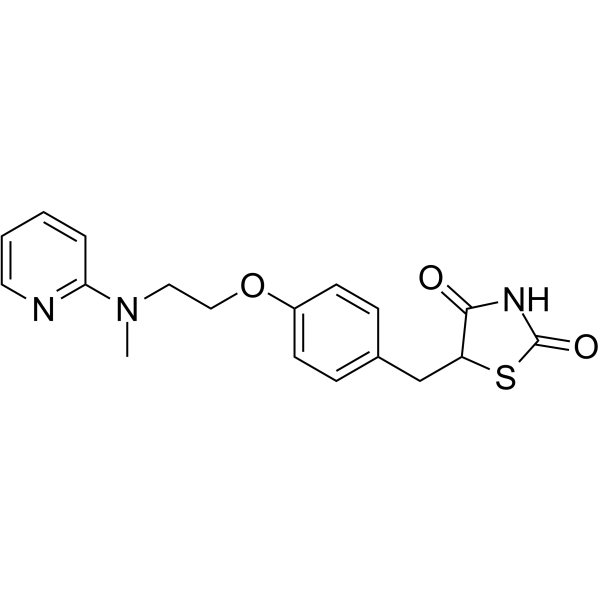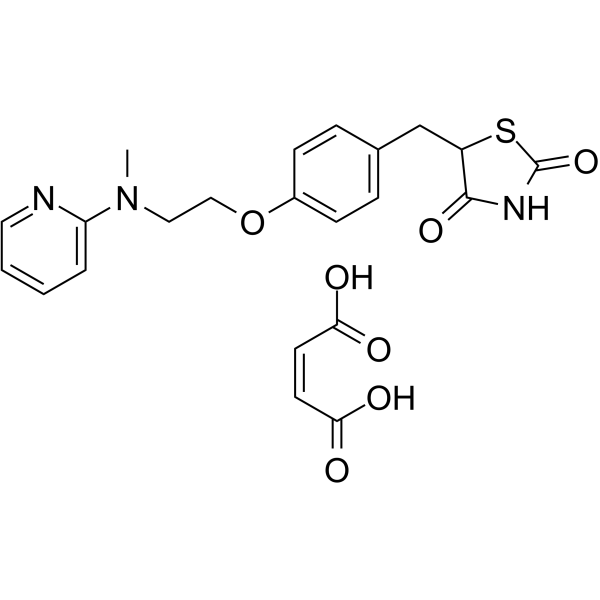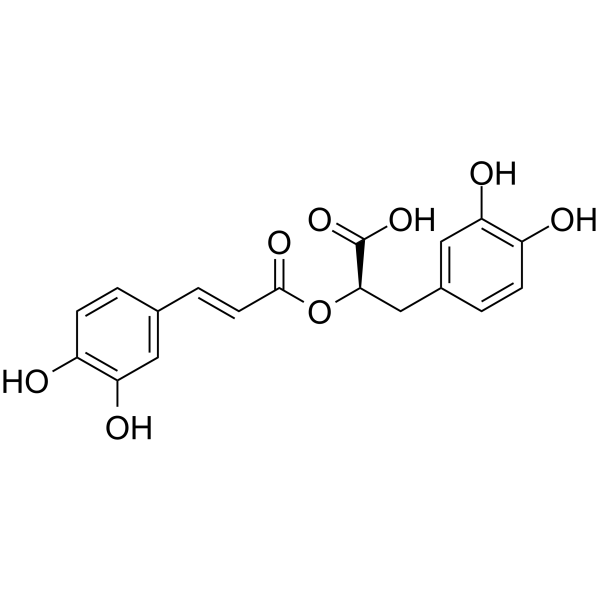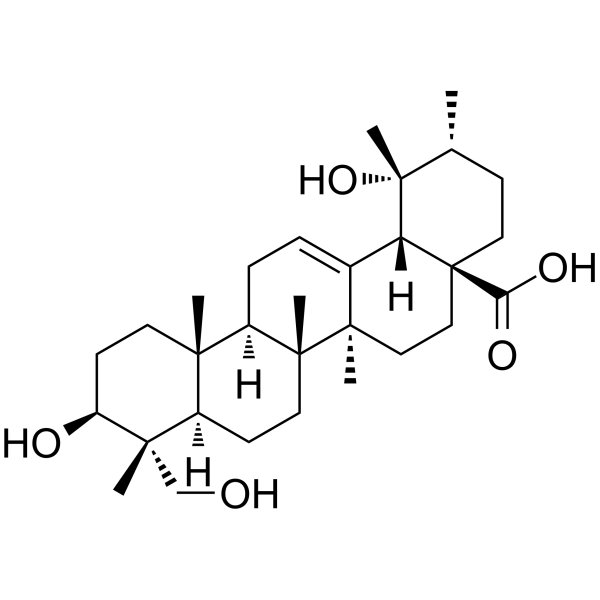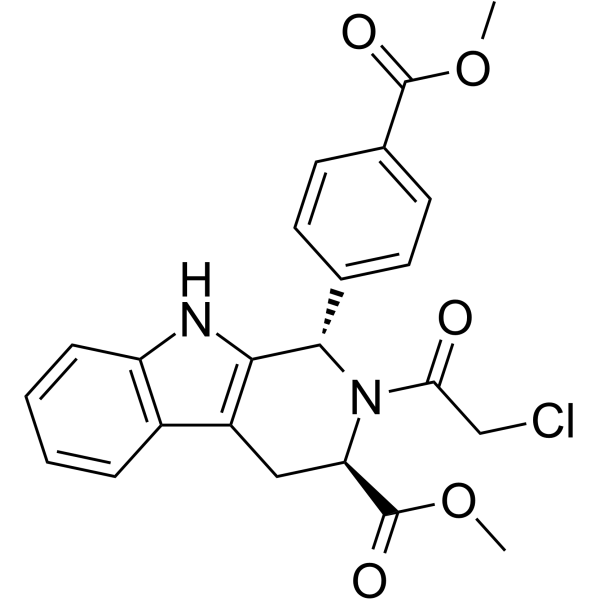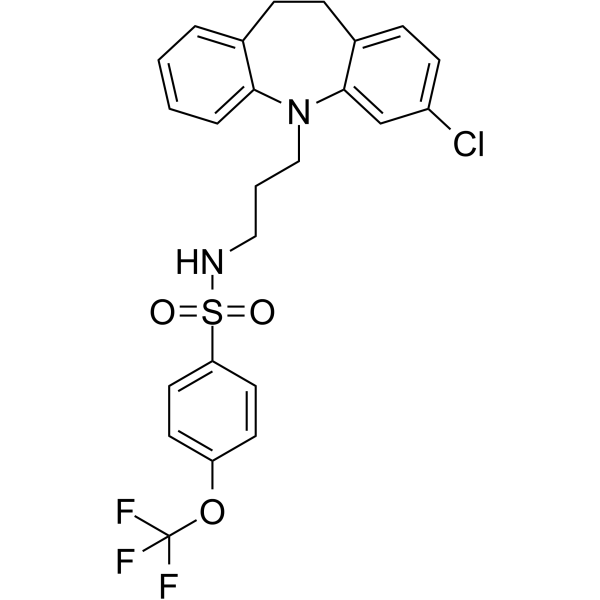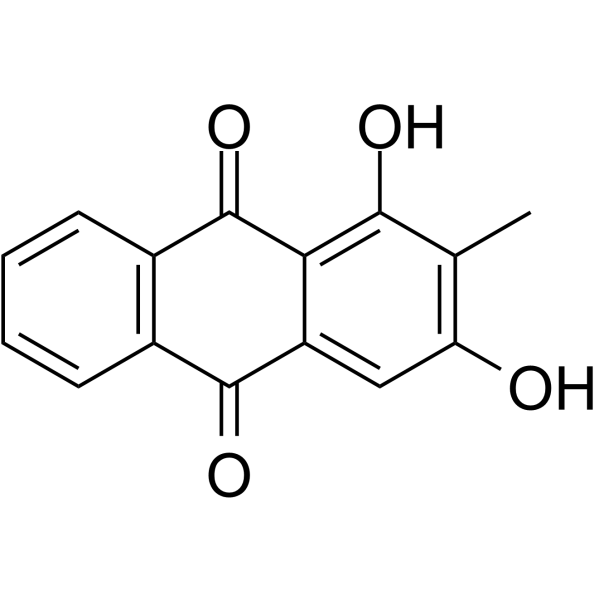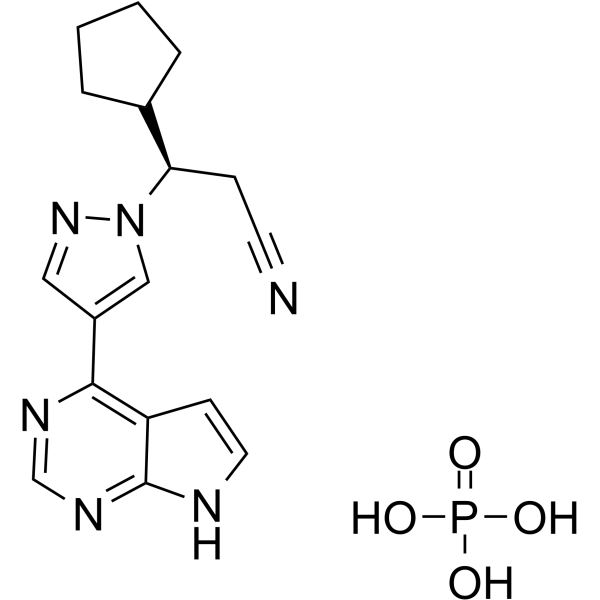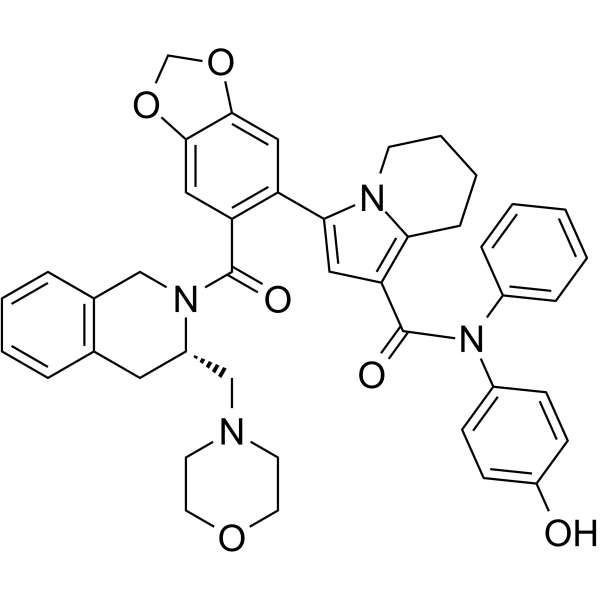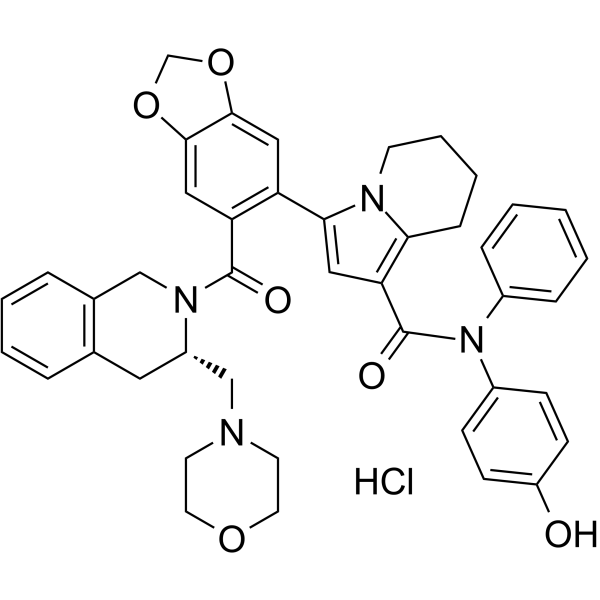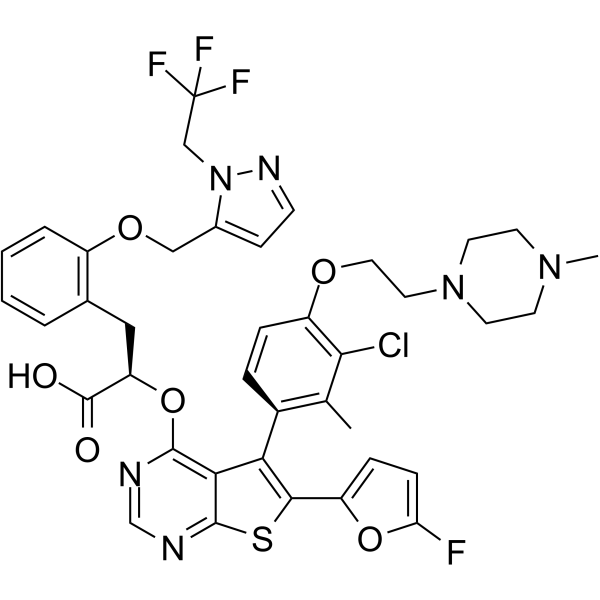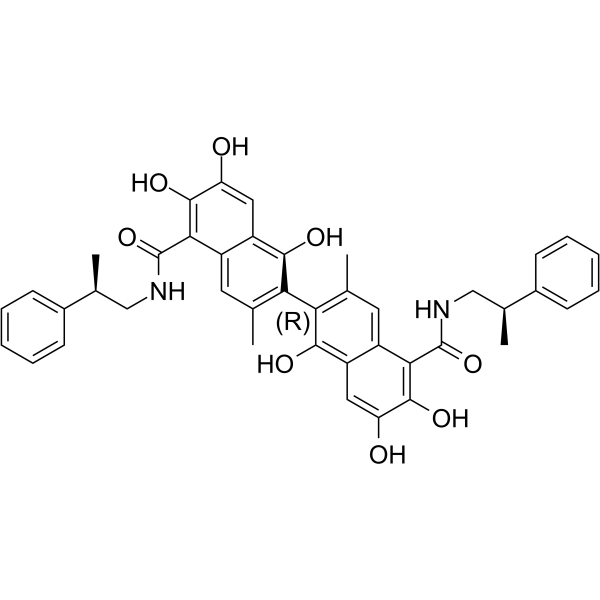|
BP10356
|
RO8994
|
|
|
|
|
RO8994 is a highly effective and specific inhibitor of spiroindolinone small-molecule MDM2, with IC50 of 20 nM (MTT proliferation assays) and 5 nM (HTRF binding assays).
|
|
BP10545
|
RO9021
|
|
|
|
|
RO9021 is an orally bioavailable, novel ATP-competitive SYK inhibitor (average IC50: 5.6 nM).
|
|
BP10750
|
Roblitinib
|
|
|
|
|
FGF401 is an inhibitor of human fibroblast growth factor receptor 4 (FGFR4), with potential antineoplastic activity. Upon administration, FGF401 binds to and inhibits the activity of FGFR4, which leads to an inhibition of tumor cell proliferation in FGFR4-overexpressing cells. FGFR4 is a receptor tyrosine kinase upregulated in certain tumor cells and involved in tumor cell proliferation, differentiation, angiogenesis, and survival.
|
|
BP10842
|
ROC-325
|
|
|
|
|
ROC-325 is an effective and orally active inhibitor of autophagy with anticancer activity. ROC-325 induces renal cell carcinoma apoptosis and exhibits favorable selectivity.
|
|
BP10439
|
Rociletinib
|
|
|
|
|
Rociletinib is an orally available small molecule, irreversible inhibitor of epidermal growth factor receptor (EGFR) with potential antineoplastic activity.
|
|
BP10541
|
Rogaratinib
|
|
|
|
|
Rogaratinib is an aberrant inhibitor of fibroblast growth factor receptor (FGFR). Rogaratinib is as an orally available, selective and potent inhibitor of FGFR-1, -2 and -3 kinase activity.
|
|
BP10338
|
Romidepsin
|
|
|
|
|
Romidepsin is an intravenously administered histone deacetylase inhibitor and antineoplastic agent that is approved for use in refractory or relapsed cutaneous and peripheral T cell lymphomas.
|
|
BP10251
|
Rosiglitazone
|
|
|
|
|
Rosiglitazone is an insulin sensitizing agent and thiazolidinedione that is indicated for the treatment of type 2 diabetes. Rosiglitazone has been linked to rare instances of acute liver injury.
|
|
BP10644
|
Rosiglitazone maleate
|
|
|
|
|
Rosiglitazone Maleate is the maleate salt of rosiglitazone, an orally-active thiazolidinedione with antidiabetic properties and potential antineoplastic activity.
|
|
BP10933
|
Rosmarinic acid
|
|
|
|
|
Rosmarinic acid has shown to contain antioxidant, anti-inflammatory and antimicrobial activities. Possesses promising physiological actions related to cognitive performance, Alzheimer′s disease prevention, kideney disease treatment, cardioprotection and c
|
|
BP10930
|
Rotundic acid
|
|
|
|
|
Rotundic acid, a natural compound, exhibit cytotoxic activities toward human hepatocellular carcinoma (HepG2), malignant melanoma (A375), SCLC (NCI-H446), breast cancer (MCF-7), and colon cancer (HT-29) cell lines.
|
|
BP10246
|
RSL3
|
|
|
|
|
RSL3 is a VDAC-independent ferroptosis activator with selectivity for tumor cells bearing oncogenic RAS. RSL3 is the inhibitor of the glutathione peroxidase 4, which can inhibit the cysteine/glutamate amino acid transporter system xc- that blocks GSH synthesis (IC50: 100 nM).
|
|
BP10505
|
RTC-5
|
|
|
|
|
RTC-5 demonstrated efficacy against a xenograft model of an EGFR driven cancer without the neurotropic effects exhibited by the parent molecules. Its effects were attributed to concomitant negative regulation of PI3K-AKT and RAS-ERK signaling
|
|
BP10187
|
Rubiadin
|
|
|
|
|
Rubiadin possesses potent antioxidant property, it can prevent lipid peroxidation induced by FeSO4 and t-butylhydroperoxide (t-BHP) in a dose dependent manner.
|
|
BP10124
|
Ruxolitinib phosphate
|
|
|
|
|
Ruxolitinib phosphate(INCB018424 phosphate) is the first potent, selective, JAK1/2 inhibitor to enter the clinic with IC50 of 3.3 nM/2.8 nM, >130-fold selectivity for JAK1/2 versus JAK3.
|
|
BP10551
|
S55746
|
|
|
|
|
S55746 is an effective and selective BCL-2 inhibitor (Ki: 1.3 nM and a Kd of 3.9 nM).
|
|
BP10550
|
S55746 hydrochloride
|
|
|
|
|
S55746 hydrochloride is a potent, orally active and selective inhibitor of BCL-2(Ki of 1.3 nM and a Kd of 3.9 nM),with antitumor activity with low toxicity.
|
|
BP10791
|
S63845
|
|
|
|
|
S63845 is a selective MCL-1 inhibitor(Kd: 0.19 nM)
|
|
BP10266
|
Sabutoclax
|
|
|
|
|
Sabutoclax(BI-97C1) is a pan-Bcl-2 inhibitor, including Bcl-xL, Bcl-2, Mcl-1 and Bfl-1 with IC50 of 0.31 μM, 0.32 μM, 0.20 μM and 0.62 μM, respectively.
|
|
BP10511
|
Sageone
|
|
|
|
|
Sageone represents a promising anticancer agent against gastric cancer that warrants further study, it synergizes with cisplatin cytotoxicity in SNU-1 human gastric cancer cells.Sageone also shows antiviral activity.
|
